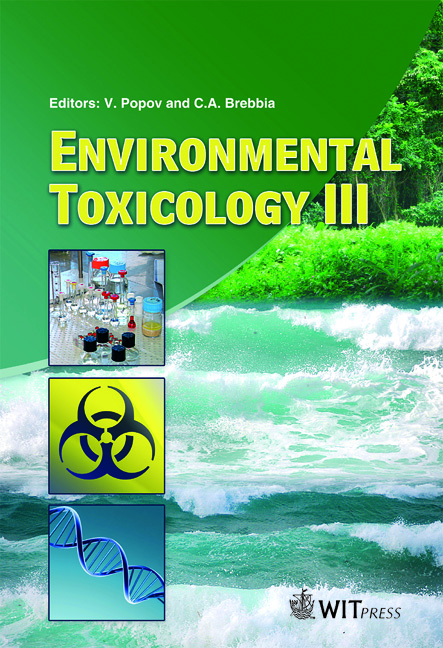An Evaluation Of Organopollutant Biodegradation By Some Selected White Rot Fungi: An Overview
Price
Free (open access)
Transaction
Volume
132
Pages
11
Page Range
131 - 141
Published
2010
Size
405 kb
Paper DOI
10.2495/ETOX100131
Copyright
WIT Press
Author(s)
M. Tekere, J. S. Read & B. Mattiasson
Abstract
An evaluation of indigenous subtropical white rot fungi producing the ligninolytic enzymes laccase and manganese peroxidase only showed that the fungi could degrade synthetic dyes, PAHs and organochlorine pesticides. Biodegradation of the polymeric dye Poly 478 saved as a good screening indicator for organopollutant degradation by the fungi and based on Poly R478, the indigenous fungi; Trametes versicolor, Trametes cingulata, Trametes pocas and unidentified strain DSPM95 were selected as high degraders from 11 screened fungi. PAH biodegradation was evaluated both in batch and continuous culture bioreactors. The degradation of PAHs at an initial concentration of 20 ppm each in static batch cultures over 31 days showed that + 60% fluorene, +40% phenanthrene, +42% anthracene and 3–11% of benzo(a)anthracene and pyrene were degraded. Biodegradation experiments using extra-cellular culture fluid demonstrated that the extracellular enzyme system of the fungi was responsible also for the biodegradation of the PAHs. Studies on PAH biodegradation by the isolate DSPM95 in packed and suspended carrier continuous bioreactors also showed that the fungi could degrade most of the PAH fed continuously at a concentration of 1 ppm over a period of at least 31 days. Keywords: white rot fungi, ligninolytic enzymes, polyaromatic hydrocarbons, synthetic dyes, organochlorine, biodegradation, bioremediation, manganese peroxidase, laccase.
Keywords
white rot fungi, ligninolytic enzymes, polyaromatic hydrocarbons, synthetic dyes, organochlorine, biodegradation, bioremediation, manganese peroxidase, laccase





